Related Research Articles
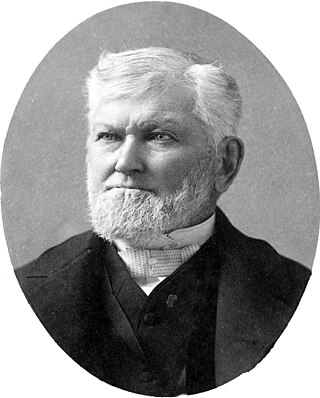
Wilford Woodruff Sr. was an American religious leader who served as the fourth president of the Church of Jesus Christ of Latter-day Saints from 1889 until his death. He ended the public practice of plural marriage among members of the LDS Church in 1890.

Lorenzo Snow was an American religious leader who served as the fifth president of the Church of Jesus Christ of Latter-day Saints from 1898 until his death. Snow was the last president of the LDS Church in the 19th century and the first in the 20th.
Thomas Baldwin Marsh was an early leader in the Latter-day Saint movement and an original member of the Quorum of the Twelve Apostles, who served as the quorum's first president in the Church of the Latter Day Saints from 1835 to 1838. He withdrew from the church in 1838, was excommunicated from it in 1839, and remained disaffected for almost 19 years. Marsh was rebaptized into the Church of Jesus Christ of Latter-day Saints in July 1857, but never again served in church leadership positions.

Abraham Owen Woodruff was an American missionary who was a member of the Quorum of the Twelve Apostles of the Church of Jesus Christ of Latter-day Saints. He was also the son of LDS Church president Wilford Woodruff.
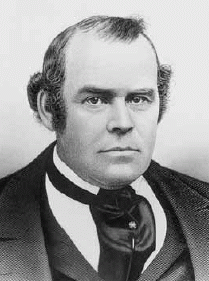
Parley Parker Pratt Sr. was an early leader of the Latter Day Saint movement whose writings became a significant early nineteenth-century exposition of the Latter Day Saint faith. Named in 1835 as one of the first members of the Quorum of the Twelve Apostles, Pratt was part of the Quorum's successful mission to Great Britain from 1839 to 1841. Pratt has been called "the Apostle Paul of Mormonism" for his promotion of distinctive Mormon doctrines.

The 1890 Manifesto is a statement which officially advised against any future plural marriage in the Church of Jesus Christ of Latter-day Saints. Issued by Church President Wilford Woodruff in September 1890, the Manifesto was a response to mounting anti-polygamy pressure from the United States Congress, which by 1890 had disincorporated the church, escheated its assets to the U.S. federal government, and imprisoned many prominent polygamist Mormons. Upon its issuance, the LDS Church in conference accepted Woodruff's Manifesto as "authoritative and binding."
The Mormon Reformation was a period of renewed emphasis on spirituality within the Church of Jesus Christ of Latter-day Saints, and a centrally-directed movement, which called for a spiritual reawakening among church members. It took place during 1856 and 1857 and was under the direction of church president Brigham Young. During the Reformation, Young sent his counselor, Jedediah M. Grant, and other church leaders to preach to the people throughout Utah Territory and surrounding Latter-day Saint communities with the goal of inspiring them to reject sin and turn towards spiritual things. During this time, some of the most conservative or reactionary elements of LDS Church doctrine came to dominate public discussion. As part of the Reformation, almost all "active" or involved LDS Church members were rebaptized as a symbol of their commitment. The Reformation is considered in three phases: a structural reform phase, a phase of intense demand for a demonstration of spiritual reform, and a final phase during which an emphasis was placed on love and reconstruction.
George Darling Watt was the first convert to Mormonism baptized in the British Isles. As a member of the Church of Jesus Christ of Latter-day Saints, Watt was a secretary to Brigham Young, the primary editor of the Journal of Discourses, and the primary inventor of the Deseret Alphabet.
Thomas Bullock was a Mormon pioneer and a clerk in the Church Historian's Office of the Church of Jesus Christ of Latter-day Saints.

Thomas Kington III was the leader of the United Brethren in England who converted to the Church of Jesus Christ of Latter Day Saints and after emigrating to Utah Territory became a bishop and patriarch in the Church of Jesus Christ of Latter-day Saints. He was charged by Brigham Young to build Kington Fort in Weber County, Utah.
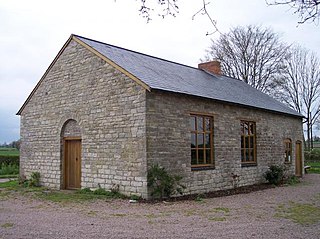
The Gadfield Elm Chapel near the village of Pendock in Worcestershire, England, is the oldest surviving chapel of the Church of Jesus Christ of Latter-day Saints.
William James Barratt was an English convert to Mormonism and became the first Latter Day Saint to live in Australia when he was sent there as a missionary of the Church of Jesus Christ of Latter Day Saints. However, he ultimately apostatized from Mormonism.
Janne Mattson Sjödahl was a Swedish convert to the Church of Jesus Christ of Latter-day Saints and was the author of influential commentaries on LDS Church scriptures. Sjödahl was among the first commentators to advance a "limited geography model" for the theorized geography of the Book of Mormon.
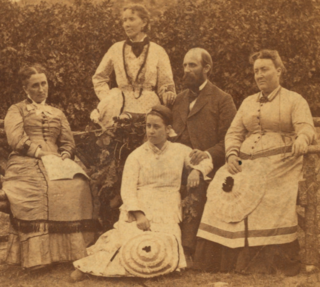
Possibly as early as the 1830s, followers of the Latter Day Saint movement, were practicing the doctrine of polygamy or "plural marriage". After the death of church founder Joseph Smith, the doctrine was officially announced in Utah Territory in 1852 by Mormon leader Brigham Young. The practice was attributed posthumously to Smith and it began among Mormons at large, principally in Utah where the Church of Jesus Christ of Latter-day Saints had relocated after the Illinois Mormon War.

The Church of Jesus Christ of Latter-day Saints in England refers to the Church of Jesus Christ of Latter-day Saints and its members in England. England has five missions, and both temples in the United Kingdom. With 145,385 members in 2011, England had more LDS Church members than any other country in Europe.
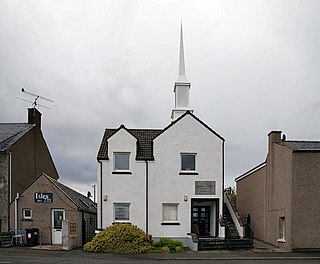
The Church of Jesus Christ of Latter-day Saints in Scotland is the Scottish branch of the Church of Jesus Christ of Latter-day Saints.

The Church of Jesus Christ of Latter-day Saints in Wales refers to the Church of Jesus Christ of Latter-day Saints and its members in Wales.

The following outline is provided as an overview of and a topical guide to the Church of Jesus Christ of Latter-day Saints.
References
- James B. Allen, Ronald K. Esplin, and David J. Whittaker. Men with a Mission: The Quorum of the Twelve Apostles in the British Isles, 1837–1841. (Salt Lake City, Utah: Deseret Book, 1992)
- James B. Allen and Malcolm R. Thorp, "The Mission of the Twelve To England, 1840–41: Mormon Apostles and the Working Classes", BYU Studies , vol. 15, no. 4 pp. 1–23 (Summer 1975)
- Richard L. Evans, "Wilford Woodruff and the United Brethren" in A Century of "Mormonism" in Great Britain (Salt Lake City, Utah: Deseret Book, 1937), reprinted 2007 by Kessinger Publishing, ISBN 1-4325-1702-3
- Tim B. Heaton, Stan L. Albrecht, and J. Randal Johnson, "The Making of British Saints in Historical Perspective", BYU Studies , vol. 27, no. 2, pp. 119–135 (Spring 1997)